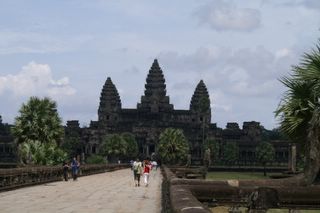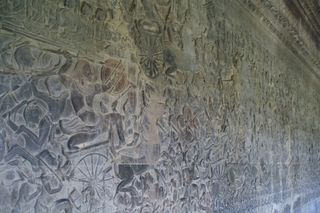Ankor Wat is a Mountain Temple dedicated to Shiva. It was created by, in one report, Suryavarman in the 12th century (yes, 1100's), though I have seen other literature indicate Jayavarman as its ruler...perhaps it was built prior to Jayavarman taking over? Needs more research. At any rate, the temple is a Hindu temple and was built as a royal tomb, so it is one of only a few that face west. Interestingly, when the region later became predominately buddhist, no real destruction was laid to the existing temples. But later when it returned to Hindu rule, the destruction of Buddhist iconography was rampant among the temples built by Buddhists during that period.









